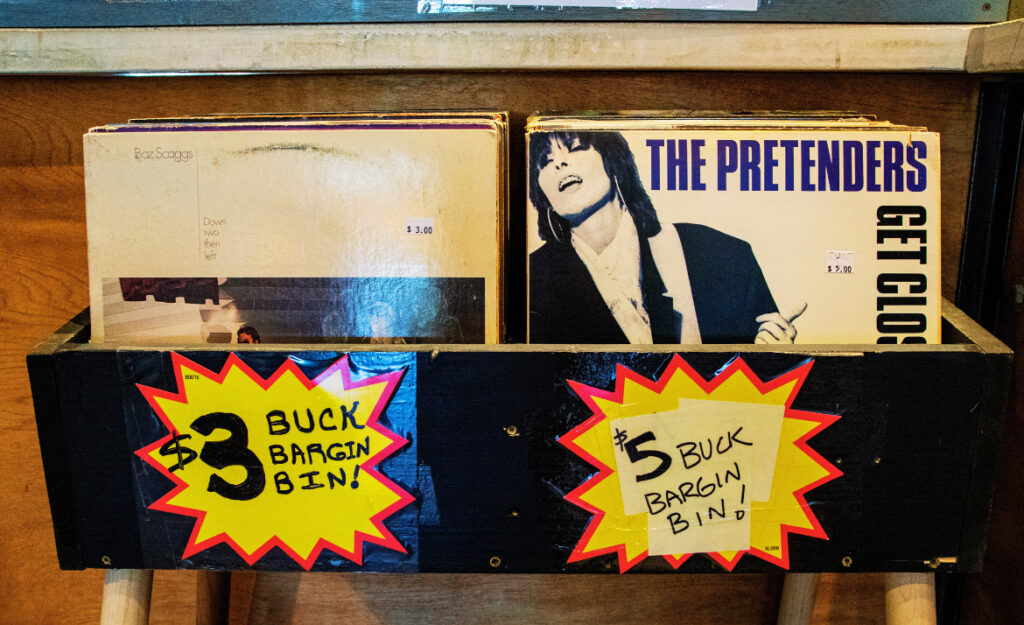
You crack open that shipping box. Your heartbeat kicks up as cardboard gives way to glossy jacket—yours, finally. Chasing rare records through online auctions always promises either heartbreak or triumph. The secret? Well-timed vinyl auction tips can transform you from hopeful watcher into seasoned winner.
The hunt for elusive pressings draws buyers worldwide to digital bidding wars. But every surge of adrenaline, found in the incremental leap of a live auction, is balanced against tactics, patience, and insider knowledge. Strategy can mean the difference between missing out and claiming grail status in your collection.
Curious how determined collectors keep landing scarce vinyl? Throughout this guide, you’ll discover actionable vinyl auction tips, deeper insights, and practical checklists to secure your next rare volume—without second-guessing your moves.
Gaining the Upper Hand: Research Before Bidding
Knowledge is one tool that instantly sharpens your edge in any online record auction. Thorough research ensures that you confidently recognize true value—and don’t overspend on common or overgraded pressings. Diligence, not luck, sets up consistent wins.
Skim listings for familiar titles, but dig deep on matrix numbers, label variations, and pressing info. Vinyl auction tips always reward the detail-oriented. Treat each auction like a detective case: every clue builds a clearer valuation and tactic.
Identifying Real Pressings With Specifics
Study matrix/runout codes before the auction begins. Compare seller photos against trusted discography sites or collector forums. Notice sticker locations, font types, and subtle label design changes—these details flag first or later pressings. Always screenshot or save reference images for future auctions.
Example: A seller posts a 1979 Blue Note reissue, but the runout shows an older original code. Say, “That code matches Liberty Van Gelder pressings; is there RVG in the deadwax?” Ask for close-up photos when in doubt. If the seller delays or refuses, prepare to walk.
Log confirmed pressings in your own collection spreadsheet for easy future cross-checking. This tracker lets you compare past purchases and notice trends—like a spike in mislisted imports—before new auctions go live, tightening your precision over time.
Using Completed Sales to Gauge Prices
Pull up several completed sales for each vinyl title on key marketplaces. Cross-reference recent sale prices, condition notes, and pressing specifics. Don’t rely on a single high or low outlier. If an auction’s current bid is already at that average sale price before the final hour, pump the brakes.
Track auctions for a week to catch market fluctuations. Save links or screenshots of comparable listings in a folder named after the record you’re chasing. Compare these across weeks to spot real price ceilings—never bid blind; let real sales history anchor your ceiling.
Adapt your bidding limit if you notice demand surging for a pressing due to a documentary or artist anniversary. Update what price you’ll stand pat at. Make a note to watch out for temporary hype that can fizzle out—steady, researched commitment wins more auctions than emotional reaction.
| Research Step | Tool/Source | Example Action | Collector Takeaway |
|---|---|---|---|
| Verify Matrix Code | Discogs/Forum | Compare runout on auction photos | Add only confirmed pressings to watchlist |
| Price Tracking | eBay Sold Listings | Note five similar auctions’ end prices | Average before setting your max bid |
| Reference Images | Google Images/Discogs | Screenshot label differences | Avoid fakes and reissues mislisted as originals |
| Condition Descriptions | Grading Guide | Check grading language for consistency | Ask questions about scratches or sleeve issues |
| Seller History | Feedback/Reviews | Read prior buyer reviews for reliability | Trust established sellers with detailed answers |
Clever Auction Tactics for Consistent Wins
Savvy collectors follow a fixed playbook at checkout. Use vinyl auction tips like sniping, pre-setting bid increments, and keeping strict discipline with your limits. It’s a system—like following a recipe, you get better results each round.
Auction platforms may vary, but the smartest moves remain the same. Bidding last minute works if you prep in advance. Setting automatic proxies means you never risk missing your window, no matter your schedule. Plan first, then let strategy do the work.
Max Bidding With a Threshold
Create your ceiling before you ever put down a bid. Write your max price on paper or your phone. At the moment of bidding temptation, glance at that number. If the price is above, step away. This habit avoids emotional upbidding, which ruins long-term wins.
- Set your ceiling after complete research to avoid regrets later on; it keeps emotional decision-making in check and aligns with your collection goals.
- Program your automatic proxy bid right after your ceiling decision; this removes the temptation to up the ante impulsively in a competitive moment.
- Review the incremental bid structure (e.g., $1.00, $2.50) at your auction platform; this ensures you aren’t overspending for a symbolic last-minute bump.
- Stick with your plan and close the browser window once you’ve placed your maximum bid; use this tactic especially for high-stakes rarities.
- Edit your limit only after new information surfaces, not mid-auction; updating just because others are bidding defeats your research efforts.
Letting the adrenaline build without impulse bidding forms good collector habits. Over time, sticking to your process means you’ll celebrate more victories and lose less—your patience and planning will undeniably pay off.
Strategic Sniping Versus Early Bidding
Sniping is placing your bid in the closing seconds. It capitalizes on the typical lull as bidders hesitate to overshoot. Early bids, by comparison, signal interest and invite competition, raising final price.
- Watch the countdown clock and time a bid for the last 6–10 seconds for best effect. This strategy leaves fewer opportunities for counterbids and can clinch deals at lower prices.
- Decision point: Snipe when you know the pressing and seller are serious, not for poorly photographed or unfamiliar records; reserve early bids for auctions with low activity where you seek to anchor the starting price to your advantage.
- Position a proxy bid as a backup, in case internet lag stalls your manual attempt; this redundancy increases your odds for in-demand records and minimizes heartbreak on closing day.
- Pair sniping with calendar reminders or alarms to avoid missing auction end times—several snipes missed have zero chance, but one well-timed attempt can land a grail at a discount.
- After the auction, review your timing notes for future strategies; this habit helps you fine-tune seconds-based decisions in upcoming bidding wars.
Consistent use of these vinyl auction tips prevents overbidding and teaches collectors how to win over time, earning a spot as a reliable buyer in any rare vinyl circle.
Evaluating Seller Credibility and Auction Quality
Savvy buyers check a seller’s reputation before every bid. Trustworthy auctioneers increase your odds of claiming records as described, reducing risk and disappointment. Curious about red flags? Here’s how you spot problems before you commit.
Reviewing Seller Feedback for Warning Signs
Examine the detail in seller ratings—are there repeated complaints about grading accuracy, slow shipping, or missing inserts? Check not only the percentage but also any recent negatives for trends. Glowing feedback, especially with personal thanks, signals reliability for higher-value records.
If sellers hide feedback or only recently started listing, be extra cautious. Don’t hesitate to message, “Can I see close-ups of specific labels or deadwax inscriptions?” Professional sellers respond thoroughly with more photos or a specific answer. A hesitant or incomplete reply is a reason to pause.
Keep a file of positive sellers who’ve delivered as promised. Make these your go-to sources, using vinyl auction tips to narrow down which shops to follow for upcoming rare pressings. Reliable sellers value repeat customers—if your experience is smooth, let them know with a kind review.
Spotting Secure Auctions and Authentic Listings
Listings with multiple clear photos of the actual record—front, back, sleeve, and labels—create trust. If the auction shows only stock images, request real photos; without them, pass. Descriptions should align with Goldmine grading standards, with condition notes about both vinyl and jacket.
Auction start times that end during typical weekday evenings attract more conclusion-time bidders. Noting this, plan to focus your attention during quiet hours—early mornings or odd weekdays—where fewer eyes means less competition.
When listings lack details or end at bad times, file them in your “skip” folder. The best auctions combine detailed, honest descriptions with clear images and end at times when committed collectors are most active—not when bots rule the field.
Prioritizing Grading, Condition, and Packaging Details
Experienced collectors make the most of vinyl auction tips by scrutinizing grading and packaging. A rare first pressing loses serious value if its sleeve is torn or warped, so pay attention to every detail posted by sellers. This separates the true gems from the just-okay.
Compare every description with the Goldmine grading scale. Records listed as “VG+” with “faint ticks” may actually merit a “VG” mark. Don’t hesitate to reach out and request more photos, focusing on any questionable scratches or edge wear. It’s better to miss an auction than pay for disappointment.
Packaging Care for Safe Shipping
Secure packaging preserves a rare win during the journey from seller to your collection. Insist on photos of shipping materials—double boxing, corner protection, and clear separation of record and sleeve prevent seam splits during transit, especially for expensive or vintage titles.
Politely specify, “Please ship the record outside the jacket in a new inner sleeve.” This instruction minimizes ringwear and keeps covers looking sharp. Reliable sellers appreciate the directness and will even thank you for your attention to detail when confirming your order.
Always spring for insurance and tracking, even if it costs a few dollars more. Collectors using these vinyl auction tips never gamble with unprotected shipping; a lost or damaged LP rarely gets replaced with rarity-grade items later.
Decoding Grade Descriptions for True Value
Look for details: “A-side has only hairline marks, B-side is clean” says more than a generic rating. Ask for audio clips of questionable records, or video of playback if possible, especially for premium purchases where the difference between NM and VG+ means $100 or more.
Trust descriptions that mention spindle marks, label wear, or jacket tears; honest sellers list every flaw. Compare those details with the price expectations from your earlier research table. Spotting discrepancies means asking for more info or setting a lower bid cap.
Remember, hype terms like “amazing for age” add little real value—stick to listings with explicit, measurable information. Combine visual and auditory cues with seller dialogue for every auction above your risk threshold. Document your queries; they anchor your buying discipline over time.
Building a Winning Mindset and Realistic Expectations
The most successful vinyl auction tips center on maintaining perspective. Not every auction ends in a win, and that’s by design. Record collecting is a marathon, not a sprint, and patience will build a stronger collection over time.
Use each near-miss as a learning session. A lost bid means you defined your limits, trusted your research, and dodged overpaying. That discipline supports long-term collecting goals. View your bid log as a tool to track progress rather than a tally of loss.
Avoiding Burnout With Pauses and Plan Review
If losing streaks happen, step back for a few days. Review your process: Was your research thorough enough? Were you chasing hype, or sticking to your plan? Write notes on what you’ll adjust next round—maybe target different eras or labels for better odds.
Set a schedule: “I check auctions on Fridays only.” This simple routine keeps auctions exciting without becoming overwhelming. Share your strategy with a trusted collecting friend. Have them spot check a few listings, too—every collector benefits from a teammate’s fresh perspective.
Return to the hunt only when your excitement exceeds your stress. The best collections come from joy, not anxiety. Every smart, deliberate move builds your skill set for the future: The more you do, the better you get.
Tracking Your Progress With Bidding Logs
Maintain a spreadsheet or notebook that notes each record bid on, the result, and what tactic you used. After a few months, trends will emerge—maybe you perform best on late-night auctions or with a certain proxy percentage.
Review your logs each season, making adjustments to target genres or price ranges where you’ve scored real wins. Celebrate small victories—”won a blue label Coltrane under $60″—as milestones. Success breeds consistency and helps crush frustration on slow weeks.
Share stories with fellow collectors for camaraderie and tips. Every log is more than data—it’s the narrative of your evolving collection. Print your favorite win as an inspiring reminder on your record shelf, and you’ll stay hungry to hunt, learn, and win.



